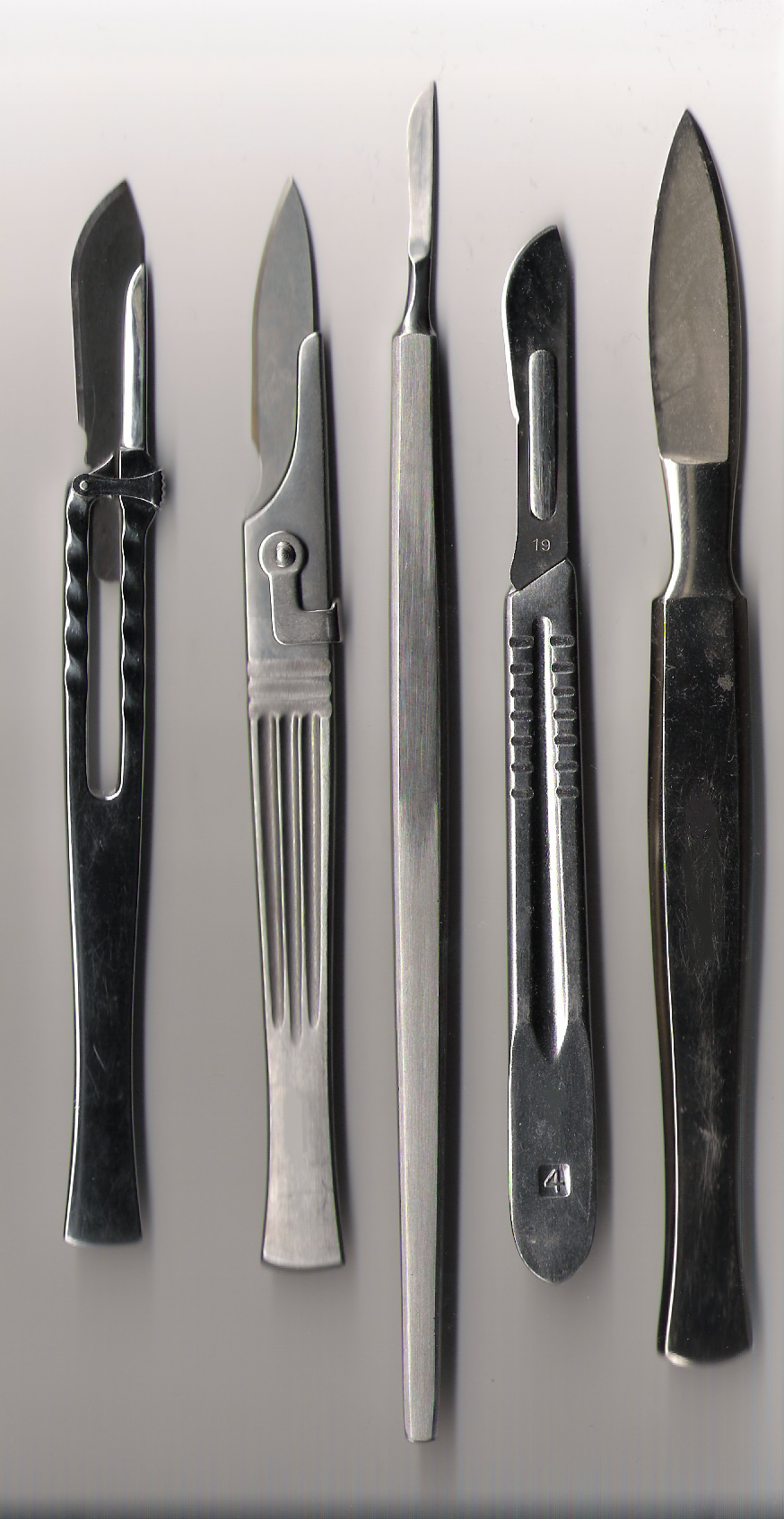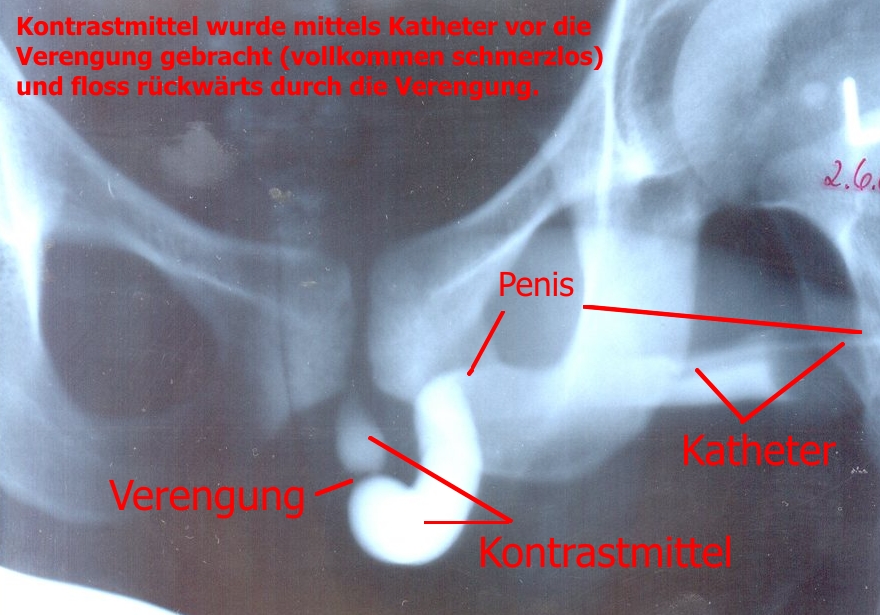|
Sound (medical Instrument)
In medicine, a sound (), also called a sonde (), is an instrument for probing and dilating passages within the body, the best-known examples of which are urethral sounds and uterine sounds. Urethral sounds Urethral sounds are designed to be inserted into the male or female urethra, for the purpose of stretching or unblocking a stricture. There are a number of different types of urethral sounds: * Bakes sounds, also known as rosebud or bullet sounds, have a long thin metal rod with a bulbous bud on the end. * Dittel sounds have a flat end and a rounded end. * Hank sounds have a more pronounced curve at the ends, as well as a metal rib on each end. * Pratt sounds are longer urethral dilators (double ended ones are usually almost a foot long) with rounded and slightly bent ends. * Van Buren sounds have very pronounced tips and applicators Uterine sounds These sounds are intended for probing a woman's uterus through the cervix, to measure the length and direction of the cervic ... [...More Info...] [...Related Items...] OR: [Wikipedia] [Google] [Baidu] |
Medicine
Medicine is the science and Praxis (process), practice of caring for patients, managing the Medical diagnosis, diagnosis, prognosis, Preventive medicine, prevention, therapy, treatment, Palliative care, palliation of their injury or disease, and Health promotion, promoting their health. Medicine encompasses a variety of health care practices evolved to maintain and restore health by the prevention (medical), prevention and treatment of illness. Contemporary medicine applies biomedical sciences, biomedical research, medical genetics, genetics, and medical technology to diagnosis (medical), diagnose, treat, and prevent injury and disease, typically through pharmaceuticals or surgery, but also through therapies as diverse as psychotherapy, splint (medicine), external splints and traction, medical devices, biologic medical product, biologics, and Radiation (medicine), ionizing radiation, amongst others. Medicine has been practiced since Prehistoric medicine, prehistoric times, and ... [...More Info...] [...Related Items...] OR: [Wikipedia] [Google] [Baidu] |
Surgical Instrument
A surgical instrument is a medical device for performing specific actions or carrying out desired effects during a surgery or operation, such as modifying biological tissue, or to provide access for viewing it. Over time, many different kinds of surgical instruments and tools have been invented. Some surgical instruments are designed for general use in all sorts of surgeries, while others are designed for only certain specialties or specific procedures. Classification of surgical instruments helps surgeons to understand the functions and purposes of the instruments. With the goal of optimizing surgical results and performing more difficult operations, more instruments continue to be invented in the modern era. History Many different kinds of surgical instruments and tools have been invented and some have been repurposed as medical knowledge and surgical practices have developed. As surgery practice diversified, some tools are advanced for higher accuracy and stability while so ... [...More Info...] [...Related Items...] OR: [Wikipedia] [Google] [Baidu] |
French Catheter Scale
The French scale, also known as the French gauge or Charrière system, is a widely used measurement system for the size of catheters. It is commonly abbreviated as Fr but may also be abbreviated as Fg, FR or F, and less frequently as CH or Ch (referencing its inventor, Charrière). However, the term ''gauge'', abbreviated ''G'' or ''ga'', typically refers to the Birmingham gauge for hypodermic needles. The French scale measures and is proportional to the outer diameter of a catheter, with 1 French (Fr) defined as millimeter, making the relationship: 1 mm = 3 Fr. Thus, the outer diameter of a catheter in millimeters can be calculated by dividing the French size by 3. For example, a catheter with a French size of 9 would have an outer diameter of approximately 3mm. While the French scale aligns closely with the metric system, it introduces redundancy and the potential for rounding errors. This metrication problem is further complicated in medical contexts where metric and im ... [...More Info...] [...Related Items...] OR: [Wikipedia] [Google] [Baidu] |
Hegar Dilators
Hegar dilators are dilators used to treat vaginismus and induce cervical dilation, and for inflatable penile implant procedures, though for penile implants it has been shown that outcomes are better ''without'' dilation. Description Hegar dilators were developed and introduced by Alfred Hegar in 1879 originally for use in the field of gynecology. Typically, dilators are a set of metal rods of increasing diameters, from a few millimeters up to 26 millimeters. The rods are round, slightly curved, and have a conal tip. Some sets have conal tips at both ends, while others have one end flattened for easy handling. Hegar dilators are typically marked with a Hegar number that is equivalent to its size in millimeters (e.g., a Hegar size 8 is 8 mm thick). Commercially available Hegar dilators are commonly sold in sets of 8, 10, or 14 individual rods. Each set includes a range of sizes, popularly from 3 mm to 17 mm for single-ended dilators or 3 mm / 4 mm to ... [...More Info...] [...Related Items...] OR: [Wikipedia] [Google] [Baidu] |
Perforating The Uterus
Organ perforation is a complete penetration of the wall of a hollow organ in the body, such as the gastrointestinal tract in the case of gastrointestinal perforation. It mainly refers to accidental or pathologic perforation, rather than intentional penetration during surgery. It can lead to peritonitis if untreated. Types include gastrointestinal perforation and uterine perforation Uterine perforation is a potential complication of any intrauterine procedure. It may be associated with injury to surrounding blood vessels or viscera such as the bladder or intestine. If not diagnosed at the time of the procedure it can occasi .... References External links Injuries {{Injury-stub} ... [...More Info...] [...Related Items...] OR: [Wikipedia] [Google] [Baidu] |
Intrauterine Device
An intrauterine device (IUD), also known as an intrauterine contraceptive device (IUCD or ICD) or coil, is a small, often T-shaped birth control device that is inserted into the uterus to prevent pregnancy. IUDs are a form of long-acting reversible contraception (LARC). The use of IUDs as a form of birth control dates from the 1800s. A previous model known as the Dalkon shield was associated with an increased risk of pelvic inflammatory disease (PID). However, current models do not affect PID risk in women without sexually transmitted infections during the time of insertion. Although copper IUDs may increase menstrual bleeding and result in painful cramps, hormonal IUDs may reduce menstrual bleeding or stop menstruation altogether. However, women can have daily spotting for several months after insertion, and it can take up to three months for there to be a 90% decrease in bleeding with hormonal IUDs. Cramping can be treated with NSAIDs. More serious potential complications ... [...More Info...] [...Related Items...] OR: [Wikipedia] [Google] [Baidu] |
Embryo Transfer
Embryo transfer refers to a step in the process of assisted reproduction in which embryos are placed into the uterus of a female with the intent to establish a pregnancy. This technique - which is often used in connection with in vitro fertilization (IVF) - may be used in humans or in other animals, in which situations and goals may vary. Embryo transfer can be done at day two or day three, or later in the blastocyst stage, which was first performed in 1984. Factors that can affect the success of embryo transfer include the endometrial receptivity, embryo quality, and embryo transfer technique. Fresh versus frozen Embryos can be either "fresh" from fertilized egg cells of the same menstrual cycle, or "frozen", that is they have been generated in a preceding cycle and undergone embryo cryopreservation, and are thawed just prior to the transfer, which is then termed "frozen embryo transfer" (FET). The outcome from using cryopreserved embryos has uniformly been positive wit ... [...More Info...] [...Related Items...] OR: [Wikipedia] [Google] [Baidu] |
Cervix
The cervix (: cervices) or cervix uteri is a dynamic fibromuscular sexual organ of the female reproductive system that connects the vagina with the uterine cavity. The human female cervix has been documented anatomically since at least the time of Hippocrates, over 2,000 years ago. The cervix is approximately 4 cm long with a diameter of approximately 3 cm and tends to be described as a cylindrical shape, although the front and back walls of the cervix are contiguous. The size of the cervix changes throughout a woman's life cycle. For example, women in the fertile years of their reproductive cycle tend to have larger cervixes than postmenopausal women; likewise, women who have produced offspring have a larger cervix than those who have not. In relation to the vagina, the part of the cervix that opens to the uterus is called the ''internal os'' and the opening of the cervix in the vagina is called the ''external os''. Between them is a conduit commonly called the cervic ... [...More Info...] [...Related Items...] OR: [Wikipedia] [Google] [Baidu] |
Urethral Stricture
A urethral stricture is a narrowing of the urethra, the tube connected to the Urinary bladder, bladder that allows urination. The narrowing reduces the flow of urine and makes it more difficult or even painful to empty the bladder. Urethral stricture is caused by injury, instrumentation, infection, and certain non-infectious forms of urethritis. The condition is more common in men due to their longer urethra. Signs and symptoms The hallmark sign of urethral stricture is a weak urinary stream. Other symptoms include: * Splaying of the urinary stream * Urinary frequency * Urinary urgency * Straining to urinate * Dysuria, Pain during urination * Urinary tract infection * Prostatitis * Inability to completely empty the bladder. Some people with severe urethral strictures are completely unable to urinate. This is referred to as acute urinary retention, and is a medical emergency. Hydronephrosis and kidney failure may also occur. Complications * Urinary retention * Prostatitis * ... [...More Info...] [...Related Items...] OR: [Wikipedia] [Google] [Baidu] |
Uterus
The uterus (from Latin ''uterus'', : uteri or uteruses) or womb () is the hollow organ, organ in the reproductive system of most female mammals, including humans, that accommodates the embryonic development, embryonic and prenatal development, fetal development of one or more Fertilized egg, fertilized eggs until birth. The uterus is a hormone-responsive sex organ that contains uterine gland, glands in its endometrium, lining that secrete uterine milk for embryonic nourishment. (The term ''uterus'' is also applied to analogous structures in some non-mammalian animals.) In humans, the lower end of the uterus is a narrow part known as the Uterine isthmus, isthmus that connects to the cervix, the anterior gateway leading to the vagina. The upper end, the body of the uterus, is connected to the fallopian tubes at the uterine horns; the rounded part, the fundus, is above the openings to the fallopian tubes. The connection of the uterine cavity with a fallopian tube is called the utero ... [...More Info...] [...Related Items...] OR: [Wikipedia] [Google] [Baidu] |
Urethra
The urethra (: urethras or urethrae) is the tube that connects the urinary bladder to the urinary meatus, through which Placentalia, placental mammals Urination, urinate and Ejaculation, ejaculate. The external urethral sphincter is a striated muscle that allows voluntary control over urination. The Internal urethral sphincter, internal sphincter, formed by the involuntary smooth muscles lining the bladder neck and urethra, receives its nerve supply by the Sympathetic nervous system, sympathetic division of the autonomic nervous system. The internal sphincter is present both in males and females. Structure The urethra is a fibrous and muscular tube which connects the urinary bladder to the external urethral meatus. Its length differs between the sexes, because it passes through the penis in males. Male In the human male, the urethra is on average long and opens at the end of the external urethral meatus. The urethra is divided into four parts in men, named after the lo ... [...More Info...] [...Related Items...] OR: [Wikipedia] [Google] [Baidu] |






